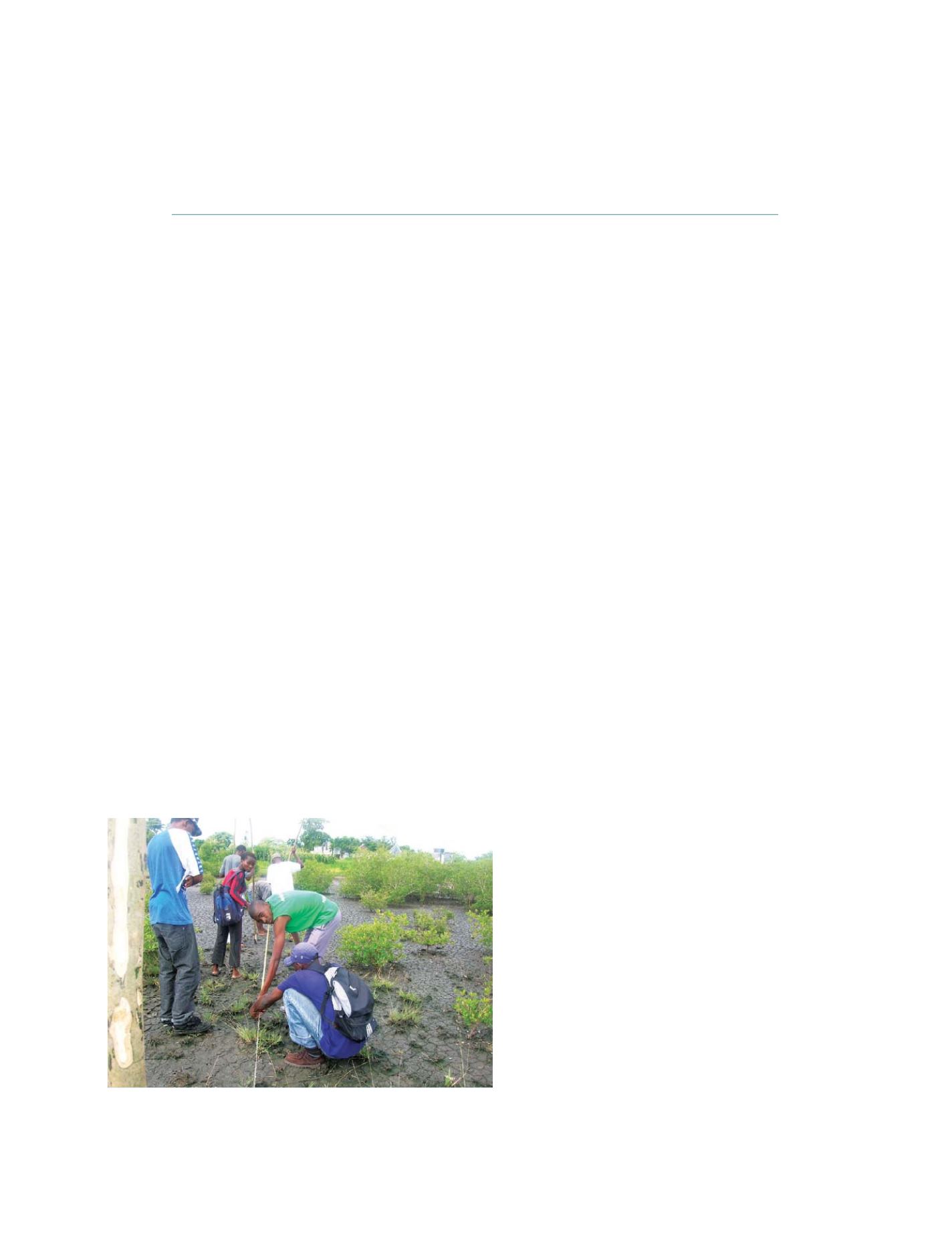

[
] 243
The business of capacity-development
Ehrlich Desa, Joannes Berque, Mika Odido and Stefano Mazzilli, UNESCO/IOC;
Geoff Holland, 2WE Associates Consulting, Canada; Antonio Hoguane, School of Marine and
Coastal Sciences, Eduardo Mondlane University, Mozambique; Venu Ittekkot, Center for
Tropical Marine Ecology, Leibniz Institute, University of Bremen, Germany;
Shailesh Nayak, Indian National Center for Ocean Information Services; Ayobami Salami,
Space Applications and Environmental Science Laboratory, Institute of Ecology and Environmental Studies,
Obafemi Awolowo University, Nigeria; Paco Ocampo Torres, Centro de Investigacion
Cientifica y de Educacion Superior de Ensenada, Mexico
U
nderstanding the ocean’s role in the earth system has
increased in importance in recent times as we have come
to realize the effect that humankind is having on the
planet’s climate system. Considering the ocean’s size, variabil-
ity and inaccessibility it is obvious that the task of monitoring
and understanding the coastal and open ocean cannot be carried
out only by the capable few. All coastal states must be involved
in this global activity because even with GEOSS fully functional,
local capabilities must still validate products and downscale
them for the benefit of local communities.
1
To achieve sustain-
able benefits, this process must be self-driven – the institute in
the developing world must drive the cooperation with its foreign
partners.
Lessons from decades of scientific cooperation
Capacity-development (CD) interventions therefore have good
reason to be included in all major international programmes. Yet
after many decades of such efforts we are not devel-
oping capacity fast enough to address the increasing
challenges from a rapidly degrading environment. In
fact, developing nations are no better off in their
capacities to address their own responsibilities and
benefits today than five decades ago, because CD has
not kept pace with an accelerating environmental
degradation.
Climate change will make the world a poorer place
and the hardest hit will be Africa and the developing
countries,
2
and in response, capacity-development will
receive greater attention and resources. Many excellent
donor-funded projects in developing regions contribute
to capacity-development. However, many others unwit-
tingly have had just the opposite effect.
The differences between working and non-working
projects are many, though two important ones need
mention. Firstly, local scientists must be involved with
externally funded projects from the time of formulation
if national priorities are to be met. If this does not
happen, local scientists may go to work on ‘attractive’
externally funded projects, thus neglecting core national
priorities. Secondly, donor haste to develop capacity
usually targets short-term research projects with appar-
ent tangible achievements, and pay almost no attention
to the longer-term programme of developing scientific
infrastructure and science education.
3
What is the suggested approach?
In principle, capacity-development needs to target
national priorities to ensure a greater level of ownership
and consequently sustainability of project outcomes.
National institutes, with the mandate of addressing
national priorities, rather than individual scientists or
NGOs, are the best partners to ensure sustainability in
defining and planning projects. The capacity-develop-
ment approaches of many organizations now follow
these principles.
4 5 6
Photo: School of Marine and Coastal
Sciences, Universidade Eduardo Mondlane
The school teaches degree courses in applied oceanography and marine
biology, conducts applied research and implements projects for sustainable use
of natural resources
S
OCIETAL
B
ENEFIT
A
REAS
– E
COSYSTEMS
















